Sulfur is melted in a flask equipped with a side arm and a neck elongated into a gradually narrowing tube. By tilting the flask, the walls are coated
with a uniform layer of sulfur melt. After cooling, the flask is mounted vertically in such a way that the tube end passes through a rubber stopper
into another flask below. From the latter, a gas outlet tube passes through a drying tube directly to the hood. A moderately rapid stream of carefully
dried Cl, is introduced through the side arm of the top flask and the walls of that flask are simultaneously heated to 50-80'C by fanning with a
flame. Once the reaction is in progress, the S2Cl2, product flows into the lower flask in a rapid succession of drops. The orange-red substance is
still contaminated by dissolved starting materials.
Some sulfur is added and it is distilled at atmospheric pressure. The portion which distills above 137'C is refractionated over sulfur at about 12mm
in an apparatus with ground glass joints, b.p. of the pure product is 29-30C at this pressure... |

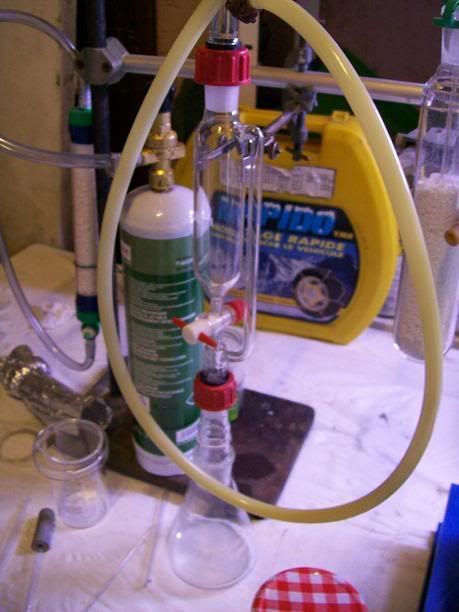
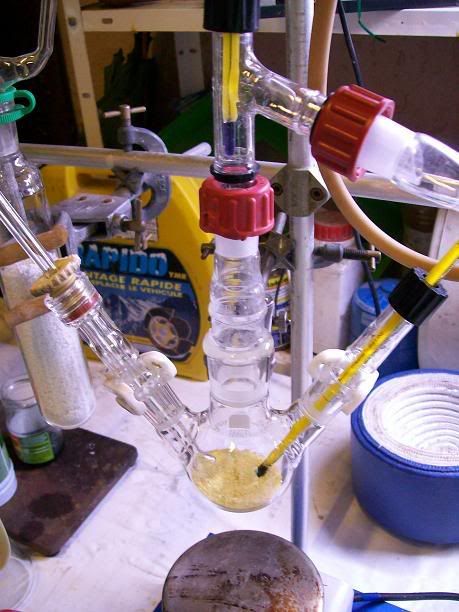
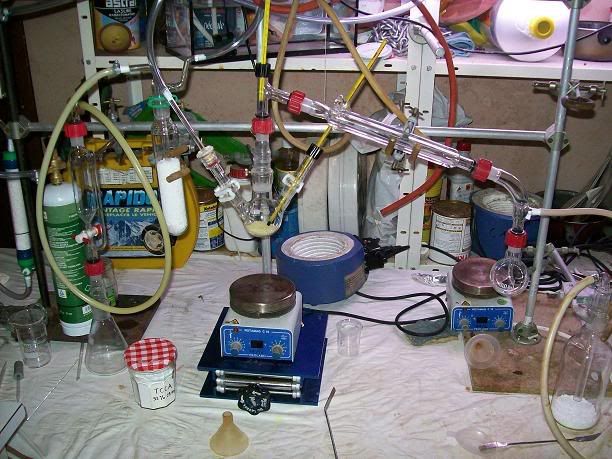

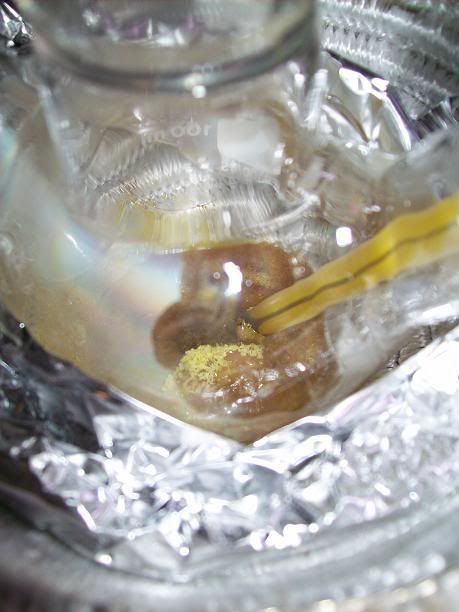
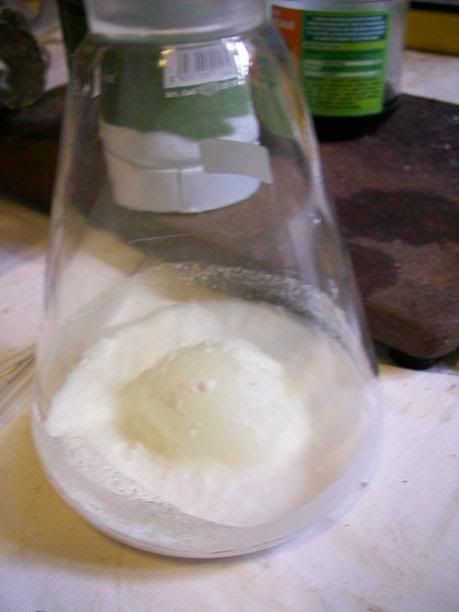

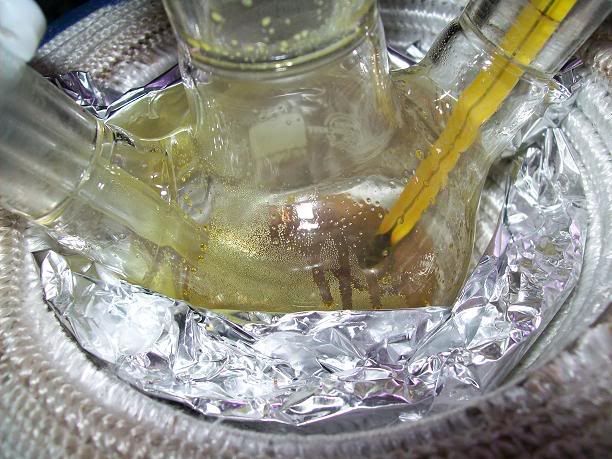
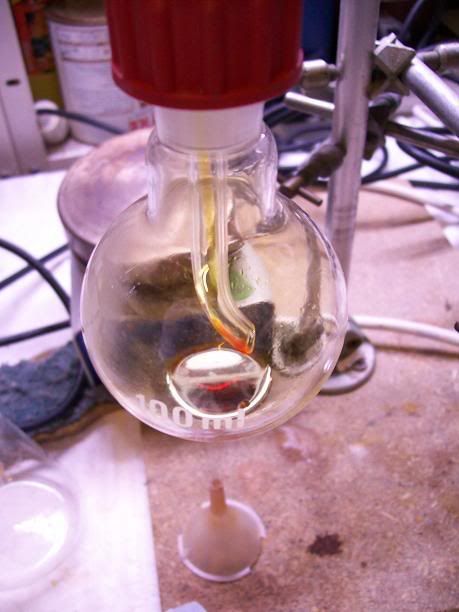

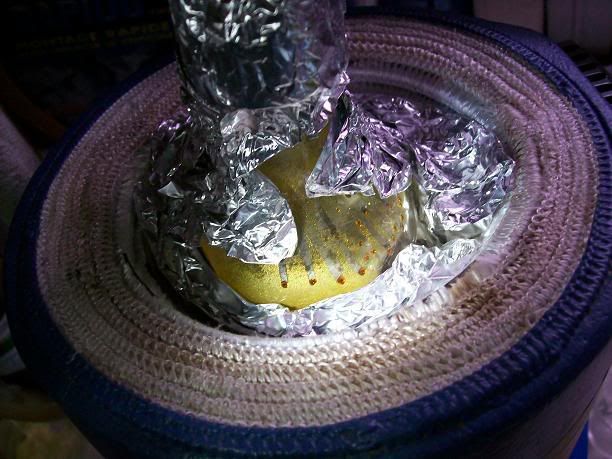
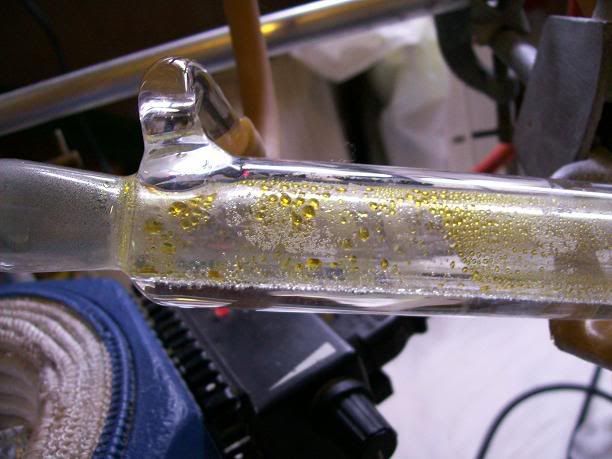

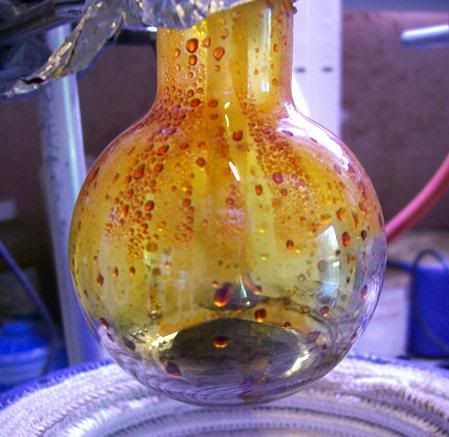


 ) excess of Cl2. Also, the distillate should have the shortest path
to the condenser, as it is hard to seperate from the unreacted sulfur in the pot, as Garage Chemist explained to me.
) excess of Cl2. Also, the distillate should have the shortest path
to the condenser, as it is hard to seperate from the unreacted sulfur in the pot, as Garage Chemist explained to me.


 .
. 
 .
. . I didnt have any S cleaning
problems, the reaction vessel had no S in it at all. I believe NaOH marks the glassware - especially the quickfit? Even a 2% boiling solution has
once left a mark on my glassware.
. I didnt have any S cleaning
problems, the reaction vessel had no S in it at all. I believe NaOH marks the glassware - especially the quickfit? Even a 2% boiling solution has
once left a mark on my glassware.



 )
)